
by Dr. Talia Marcheggiani, ND | Jun 26, 2021 | Asian Medicine, Ayurvedic Medicine, Diagnostics, Evidence Based Medicine, Healing Stories, Medicine, Mental Health, Mind Body Medicine, Naturopathic Philosophy, Philosophy, Preventive Medicine, Traditional Chinese Medicine
“I don’t believe in diseases anymore, I treat stories.
“…No other medical system in the world ever believed in diseases. They all treat everybody as if, you know it’s whether it’s the ancestors or meridians–it’s none of this rheumatoid arthritis, strep throat kind of thing. That’s just this construct that we kind of… made up.”
– Dr. Thomas Cowan, MD
Dr. Cowan is admittedly a (deliciously) controversial figure. His statement, I’m sure, is controversial. But that’s why it intrigues me.
In naturopathic medicine, one of our core philosophies, with which I adhere very strongly, is “treat the person, not the disease”.
And, in the words of Sir William Osler, MD, “It is much more important to know what sort of person has a disease, than to know what sort of disease a person has”.
And, I guess it’s relevant to ask, what is disease in the first place?
I see disease as an non-hard end point, a state that our biological body enters into. On the continuum between perfect health (which may be an abstract and theoretical construct) and death, disease I believe is near the far end of the spectrum.
Disease happens when the body’s proteins, cells, tissues, or organs begin to malfunction in a way that threatens our survival and disrupts our ability to function in the world. For example, a collection of cells grows into a tumour, or the immune system attacks the pancreas and causes type I diabetes.
But, of course there is always more to the story.
What causes disease?
I have heard biological disease boiled down to two main causes: nutrient deficiencies and toxicities. And, I’m not sure how strongly I agree with this, but on a certain level I find this idea important to consider.
However, it is definitely not how Western Medicine views the cause of disease!
Diseases, as they are defined, seem to be biological (as opposed to mental or emotional). They have clinical signs and symptoms, certain blood test results, or imaging findings, and they can be observed looking at cells under a microscope.
Medical textbooks have lists of diseases. Medicine is largely about memorizing the characteristics of these diseases, differentiating one from another, diagnosing them, and prescribing the treatment for them.
As a naturopathic doctor, I see a myriad of patients who don’t have a “disease”, even though they feel awful and are having difficulty functioning. These patients seem to be moving along the disease spectrum, but their doctors are unable to diagnose them with anything concrete–they have not yet crossed the threshold between “feeling off” and “disease”.
Their blood tests are “normal” (supposedly), their imaging (x-rays, MRIs, ultrasounds, etc.) are negative or inconclusive, and their symptoms don’t point to any of the diseases in the medical school textbooks.
And yet they feel terrible.
And now they feel invalidated.
Often they are told, “You haven’t crossed the disease threshold yet, but once you reach the point where you’re feeling terrible and our tests pick it up too, come back and we’ll have a drug for you”.
Obviously not in so many words, but often that is the implication.
Our narrow paradigm of disease fails to account for true health.
Even the World Health Organization states that health is not the mere absence of disease.
So if someone does not have health (according to their own personal definition, values, dreams, goals, and responsibilities), but they don’t have disease, what do they have?
They have a story.
And I don’t mean that what they’re dealing with is psychological or mental or emotional instead, and that their issues are just “all in their head”. Many many times these imbalances are very biological, having a physical location in the body.
Subclinical hypothyroidism, insulin resistance, nutrient deficiencies, chronic HPA axis dysfunction, and intestinal dysbiosis are all examples of this. In these cases we can use physical testing, and physical signs to help us identify these patterns.
An aside: I believe the categories of biological, mental, environmental, and emotional, are false.
Can we have minds without biology? Can we have emotions without minds or physical bodies? How do we even interface with an environment out there if we don’t have a body or self in here?
Aren’t they all connected?
Ok, back to the flow of this piece:
Your story matters.
This is why it takes me 90 minutes to get started with a new patient.
It’s why I recommend symptom and lifestyle habit tracking: so that we can start to pay attention.
It’s why I’m curious and combine ancient philosophies, research (because yes, research is useful, there’s no doubt–we should be testing out our hypotheses), and my own intuition and skills for pattern-recognition, and my matching my felt-sense of what might be going on for a patient with their felt sense of what they feel is going on for them.
Attunement.
I write about stories a lot. And I don’t mean “story” in a woo way, like you talk about your problems and they go away.
No. What I mean is that you are an individual with a unique perspective and a body that is interconnected but also uniquely experienced. And my goal is to get a sense of what it’s like to be you. What your current experience is like. What “feeling like something’s wrong” feels like. What “getting better” feels like.
And all of that information is located within story.
Your body tells us a story too. The story shows up in your emotions, in your physical sensations, in your behaviours (that might be performed automatically or unconsciously), in your thoughts, in your energy, and in the palpation of your body.
No two cases of rheumatoid arthritis are the same. They may have similar presentations in some ways (enough to fit the category in the medical textbooks), but the two cases of rheumatoid arthritis in two separate people differ in more way than they are the same.
And that is important.
We’re so used to 15 minute insurance-covered visits where we’re given a quick diagnosis and a simple solution. We’re conditioned to believe that that’s all there is to health and that the doctors and scientists and researchers know pretty much everything there is to know about the human body and human experience.
And that if we don’t know about something, it means that it doesn’t exist.
When we’re told “nothing is wrong” we are taught to accept it. And perhaps conclude that something is wrong with us instead.
When we’re told that we have something wrong and the solution is in a pill, we are taught to accept that too. And perhaps conclude that something is wrong with our bodies.
But, you know what a story does?
It connects the dots.
It locates a relevant beginning, and weaves together the characters, themes, plot lines, conflicts, heroes, and myths that captivate us and teach us about the world.
A story combines your indigestion, mental health, microbiome, and your childhood trauma.
A story tells me about your shame, your skin inflammation, your anxiety, and your divorce.
Maybe you don’t have a disease, even if you’ve been given a diagnosis.
Maybe you have a story instead.
What do you think about that?
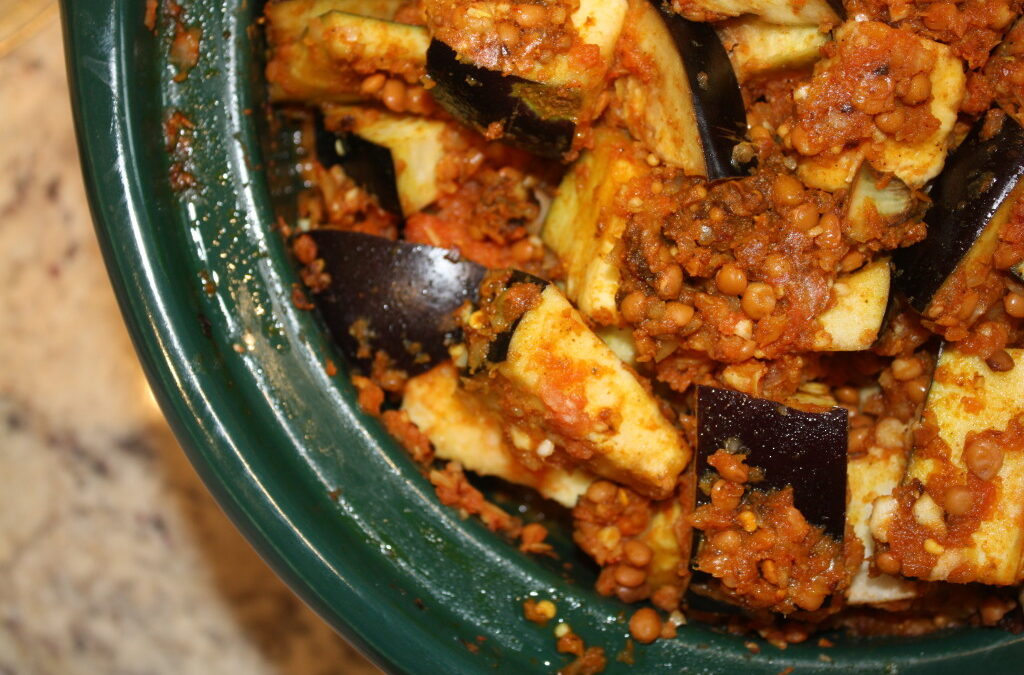
by Dr. Talia Marcheggiani, ND | Dec 10, 2014 | Asian Medicine, Ayurvedic Medicine, Cooking, Digestion, Food, Gluten Free, Nutrition, Recipes
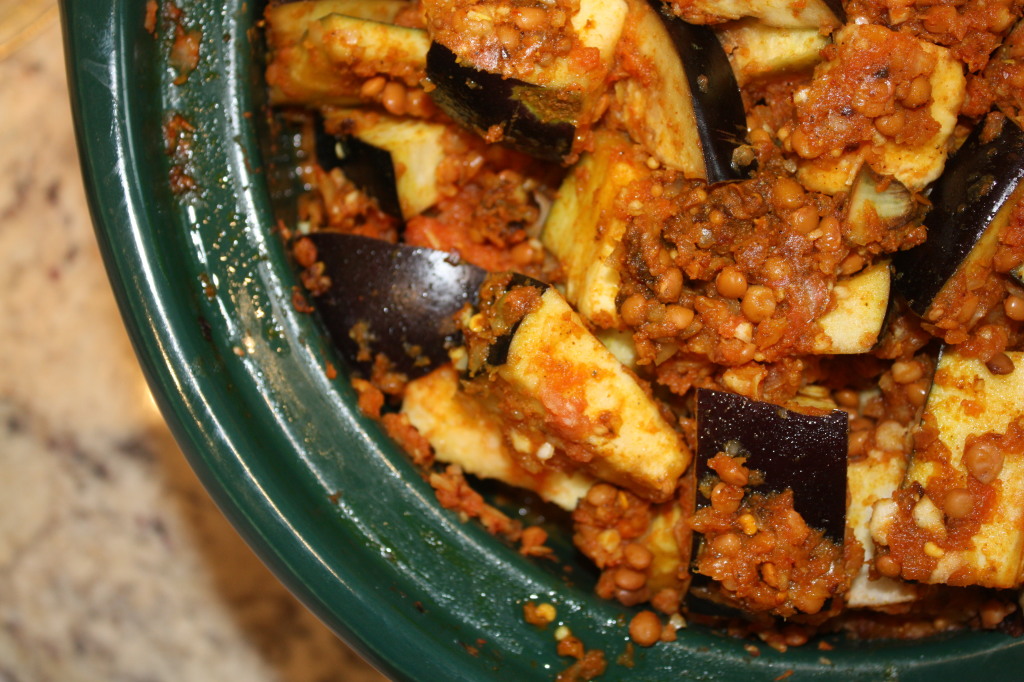
Finding the time and energy to cook during the winter can be tough. However, one of the best things you can do for your health (and wallet) is cook meals at home. Knowing a few slow cooker recipes is essential for getting through a cold, dry winter. Soups, stews and curries are warming and easy to digest; these healthy comfort foods help us feel energized and keep our immune systems strong. Slow cooking is a great way to prepare healthy, hearty meals while you watch the Mindy Project or spend the day working or hiking in the forest. This recipe makes a good amount of eggplant masala, which is perfect for leftovers and lunches. The meal is gluten free (if served with rice) and dairy free as well as vegan. It is high in healthy fibres, healthy fats (if cooked in coconut oil or avocado oil) and protein. The recipe is an adaptation from one I learned at a cooking class I took while traveling in Northern India.

Eggplant Masala (from North India)
Ingredients:
4 medium-sized eggplants
4 large tomatoes (or a can of diced tomatoes)
3 white onions
10 cloves of garlic
1 can of chickpeas or lentils
5 tbs mustard oil, coconut oil or another heat-stable oil (I had avocado oil on hand)
4 tsp ground coriander
3 tsp ground turmeric
2 tsp red chilli peppers
1 tsp salt
1 tsp garam masala
1 tsp mustard seeds
1 tsp cumin seeds
1 tsp fenugreek seed (I couldn’t find fenugreek when I was in the grocery store, and my dog was waiting, tied outside, so I didn’t include it in this recipe. The recipe still tasted lush without it).
a blender, stove and slow-cooker (optional)
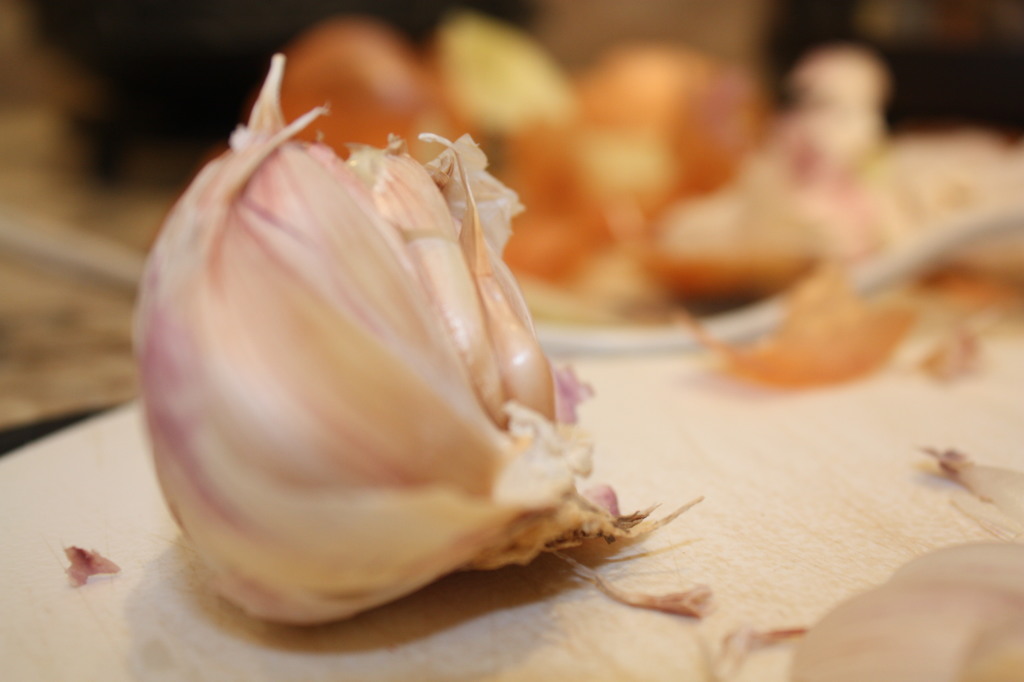
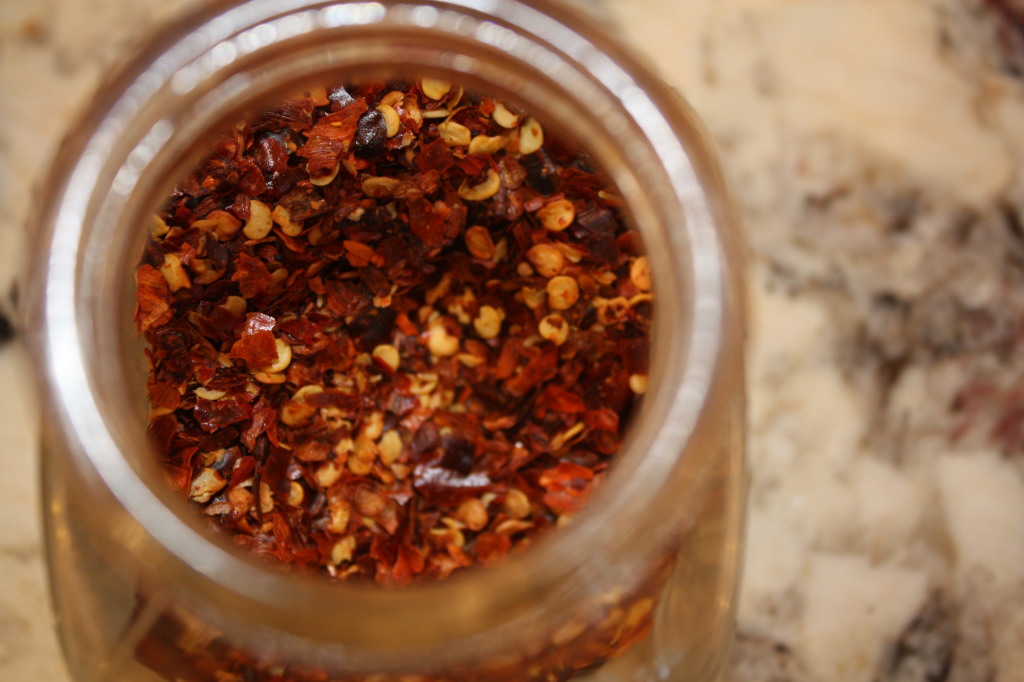
Directions:
Heat oil on medium heat, add in the spices to release the flavours.
Blend together tomatoes, onions and garlic. Chop eggplants into 1 inch squares.
Add all the ingredients – eggplants, oil + spices, and vegetable blend, including the lentils/chickpeas – to a slow-cooker and cook on low for 6 hours or on high for 4. Take a walk with your family, meet your friend for coffee, ride your bike, have a bubble bath or leave for work. Another option is cooking the ingredients on a covered pan over medium-high heat for 40 minutes to 1 hour, or until eggplants are soft.
When ready, serve over rice or with chapati or naan.
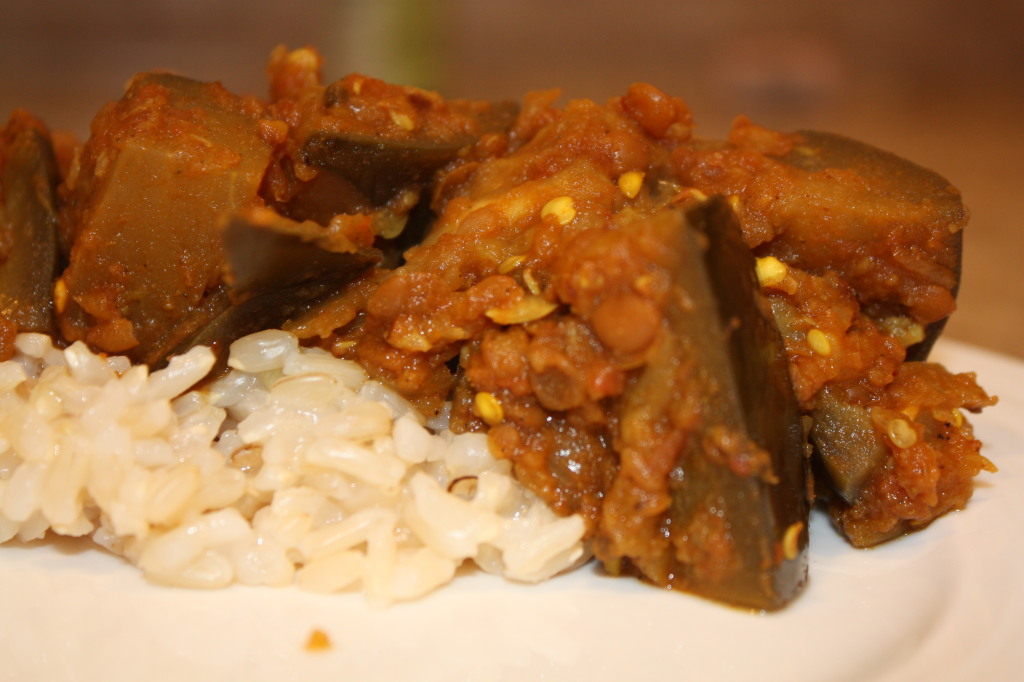
Enjoy!
by Dr. Talia Marcheggiani, ND | Sep 18, 2013 | Ayurvedic Medicine, Detoxification, Self-care, Skin health, Stress
I await my first real patient: a referral from a friend. I know this new patient suffers from chronic migraines, related to stress, and I am excited; I already have some ideas about what to prescribe. It’s been 9 long years since I decided that I wanted to enter into a healing profession and soon I will be face-to-face with a real human, someone who requires the skills I have so painstakingly acquired over the years through hours of book-study. I am elated. The appointment is cancelled, however, as I am attacked by a migraine headache myself, one that I used to suffer from regularly but haven’t experienced in months. The headache is all-encompassing and I am forced to go home. It’s only on reflection, months later, that I realize the irony of being forced to cancel an appointment due to being afflicted by an attack of the very condition I was to treat.
(more…)
by Dr. Talia Marcheggiani, ND | Jun 28, 2012 | Ayurvedic Medicine, Beauty, Detoxification, Digestion, Elimination Diet, Home Remedies, Pregnancy, Preventive Medicine, Self-care, Skin health, Supplements, Women's health
At a teacher training I recently attended, we were given the task of deciding what we would take with us if we were to go to a deserted island. While other people chose things like hatchets, food, water (and a boat), I automatically thought: castor oil! Sometimes I forget that the rest of the world isn’t living under the naturopathic bubble.
(more…)
by Dr. Talia Marcheggiani, ND | Jun 4, 2012 | Addiction, Art, Art Therapy, Asian Medicine, Ayurvedic Medicine, Creativity, Emotions, Family, Mental Health, Philosophy, Poetry, Preventive Medicine
After publishing my last post I felt a giant weight release itself from somewhere behind my sternum like a great knot loosening.
(more…)
by Dr. Talia Marcheggiani, ND | Apr 12, 2012 | Asian Medicine, Ayurvedic Medicine, Balance, Motivation, Nature, Nature Cure, Naturopathic Philosophy
Did you know that women who have a hysterectomy (removal of the uterus) can suffer from lack of creativity and a decrease in overall motivation after the organ has been removed?
(more…)
by Dr. Talia Marcheggiani, ND | Apr 2, 2012 | Anti-aging, Ayurvedic Medicine, Beauty, Detoxification, Digestion, Hydrotherapy, Nature Cure, Naturopathic Philosophy, Self-care, Skin health
Castor oil is one of the best kept secrets of naturopathic medicine. Taken from the bean of the castor plant, this oil is rich in ricinoleic acid, an important active constituent that makes castor oil so special.
(more…)
by Dr. Talia Marcheggiani, ND | Mar 26, 2012 | Ayurvedic Medicine, Balance, Canadian College of Naturopathic Medicine, Empathy, Finding yourself, Healing Stories, Home Remedies, Listening, Nature, Nature Cure, Naturopathic Philosophy
I can’t really say that I’m a creature of habit. I easily tire of routine and consistency. Maybe it was for this reason that I felt the need to take off from Canada for a few years and travel, why I remain a perpetual student (no two days are the same and we get a 4-month summer of something radically different). The student life serves me well in breaking up the routine.
(more…)
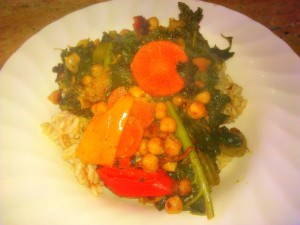
by Dr. Talia Marcheggiani, ND | Mar 2, 2012 | Asian Medicine, Ayurvedic Medicine, Balance, Colombia, Cooking, Diet, Digestion, Food, Healing Stories, Nutrition, Recipes, South America, Teaching English as a Foreign Language, Travel, Travel Stories
 Colombian food mainly consists of: white rice, a large portion of bland, unseasoned, tough meat, potatoes and a “salad” (which means one leaf of iceburg lettuce and a pale, sad tomato slice).
Colombian food mainly consists of: white rice, a large portion of bland, unseasoned, tough meat, potatoes and a “salad” (which means one leaf of iceburg lettuce and a pale, sad tomato slice).
(more…)
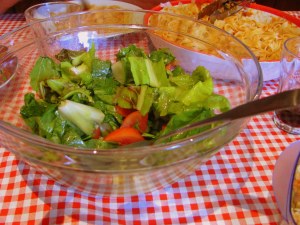
by Dr. Talia Marcheggiani, ND | Feb 9, 2012 | Ayurvedic Medicine, Balance, Cooking, Diet, Digestion, Food, Nutrition
I’m sure all of you can name the 4 taste receptors that scientists have discovered on the tongue: sweet, sour, salty and bitter. However, Ayurvedic medicine has categorized food properties into 6 distinct tastes.
Some of the constitutional doshas require more of certain tastes than others, but it is thought that well-balanced meals encompass all 6 of the Ayurvedic tastes, covering the entire spectrum of food quality. The 6 Ayurvedic tastes are: sweet, sour, salty, bitter, pungent and astringent.
According to Ayurveda, balancing the 6 tastes in the diet aids digestion, ensures physical, emotional and mental well-being and helps decrease aggravation of the dominant dosha of an individual.
About the tastes:
Sweet:We can all easily identify sweet foods, such as honey and fruits. However, sweet taste also includes carbohydrates like rice and other grains, potatoes and milk. Sweet functions include building up tissues and calming nerves.
Sour: Includes acidic fruits such as oranges, lemons and grapefruit, fermented foods (yogurt, kambucha, sauerkraut), alcohol and vinegar. Sour taste acts to cleanse the body and increase the absorption of nutrients.
Salty: Foods that contain salt, from minerals, meat or seaweed. Salt acts to stimulate digestion and improve the taste of food. It also calms nerves and relaxes the mind.
Bitter: Includes dark leafy greens and certain herbs and spices. We often lack enough bitter tasting foods in our Standard American Diet, however, bitter taste is important for detoxification and digestion. According to our Botanical Medicine class, it improves appetite, aids digestion and psychologically “increases one’s appetite for life”.
Pungent: Foods that are spicy, including herbs, peppers and garlic. Pungent tastes increase metabolism and aid digestion.
Astringent: These are foods that produce a “dry” taste in the mouth. Foods that are astringent include legumes, certain fruits, such as apples and pears, certain vegetables, tofu and herbs. Astringent taste helps “dry” fats, thereby aiding weightless, and tightens tissues. In Western Herbalism astringent herbs are used for wound healing and tonifying mucus membranes of the skin, respiratory, urinary and digestive tracts.
Although having a balance of the 6 tastes is beneficial for a healthful diet, increasing certain foods in the diet can help balance the dosha that one is predominant in:
Vata Dosha is balanced by sweet, salty and sour tastes.
Pitta Dosha is balanced by sweet, bitter and astringent tastes.
Kapha Dosha is balanced by bitter, pungent and astringent tastes.
In the Western world we rely heavily on sweet, sour and salty tastes, through a diet high in carbohydrates, processed foods (high salt content) and alcohol (sour). Considering the fact that we live in a Vata-aggravated society, it is comprehensible that our culture gravitates to these tastes more than the other three. However, the leading rise in obesity (Kapha aggravation) could be reflective of the lack of bitter, pungent and astringent tastes in our diets.
In my Ayurvedic course we analyzed various ethnic diets and found that cultures with a set of dietary practices usually include all 6 tastes in their cuisine. We examined Indian, Thai, Persian, Ethiopian and Chinese cuisines, but I also feel that even Italian food represents a balanced diet, according to Ayurveda.
If we take a typical Italian meal – pasta with meat sauce and Insalata Della Nonna– we see that all 6 tastes are represented.

The sweet tastes are represented by the pasta (be it rice pasta, spaghetti squash or another form of pasta), the tomato sauce and some of the vegetables in the salad.
The salty tastes are from the salt and meat added to the sauce.
The sour taste is from the homemade red wine vinegar salad dressing (and the wine!).
The bitter taste comes from the radicchio and fresh garden lettuce in the salad.
The pungent tastes come from the garlic and chili peppers used to make the pasta sauce.
The astringent tastes comes from the fennel and celery in the salad and the apple for dessert.
Dissecting your daily meals for tastes that your diet may be missing is a fun and therapeutic practice. Use it to see how your own diet (whether it is one you have invented for yourself or the one dictated to you by your family or country of origin) may be improved by adding certain flavours. I find it aids me in achieving balance in my own diet, especially when traveling to a new country or designing my own meals. Practicing mindful eating is helpful to detect and distinguish the flavours of your favourite food staples. Chew them slowly and try to decide if the food in your mouth is sweet, salty, sour, bitter, pungent or astringent, or a combination of two or more of these flavours.











